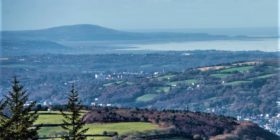Planet Earth’s Adventure Into Cities Cements Its Position As A Pioneer Of Environmental Film
With its depiction of sublime landscapes and unique creatures in a manner unsurpassed by other documentary series, Planet Earth II has been wowing millions over the last six weeks. Conversations overheard on the bus or in the supermarket queue have frequently featured prancing flamingos or those infamous snakes: a whole new generation have been introduced to the wonders of the natural world.
Planet Earth first debuted ten years ago, as Al Gore’s An Inconvenient Truth attempted to engage the public on the urgency of solving global warming. Meanwhile, David Attenborough was fascinating Planet Earth’s audience with stories about endangered species and remote places – trying to raise environmental awareness with a very different approach.
Although the format of the second series remains the same, subtle changes in the way storylines are presented hint at how the way we see the natural world has evolved, even over a decade. The climate of the conversation in Planet Earth II is a strong reminder of what we can lose and what we have already lost.
Nowhere is this more evident than the choice of habitat for the last episode in the series: cities. The portrayal of animal life in the cities is certainly an attempt to reinforce the concern on how human activities and manufactured landscapes have a strong and permanent impact on the natural world. In doing so, these new tales of animal life open the conversation on environmental risks and highlight the importance of preserving the wonders of our planet like never before.
The Day After Tomorrow
Ten years ago environmental awareness was at unprecedented levels. “Serious” documentaries such as An Inconvenient Truth came hot on the heels of climate disaster movies such as The Day After Tomorrow. The media’s will to produce content that would change public perception of environmental risk, especially climate changes, seemed to be at its highest.
A decade on, we seem to be in a similar period. But the format has, to some extent, changed. Studies from psychology and communication have proven that fictional stories have a great impact on the public, sometimes even more than documentary format.
Planet Earth, despite being an iconic documentary series about nature, also has features of fiction. There is some distance between the environments chosen in Planet Earth and the artificial cityscapes that pepper the globe, something that many savour in the series. And accompanied by an original score by Hans Zimmer, Oscar winner and composer of music for acclaimed films such as Gladiator and The Dark Knight Rises, the starring animals in these landscapes can appear as superheroes. Each scene captures characteristics common to both humans and wildlife: love, family, parental instinct, fights for domination and survival.
But rather than opting for an apocalyptic rhetoric or messages of fear, which usually belong to environmental documentaries, Planet Earth employs a “positive” narrative that, according to some studies, can generate a bigger impact on the public and sometimes lead to individual action. If you’ve found yourself egging on an iguana from the safety of your sofa or terrified about the fate of an antelope, then you’ve identified with Planet Earth’s characters. Along with this identification, it is hoped, comes a shift in our perception of the environment and the
issues surrounding our planet.
Human animals
Planet Earth’s fairytale rendition of animals adapting to a fast changing environment also provide us with a chance to reflect on one of the most important questions about environmental risks: how can we, too, adapt to climate change?
Cleverly distancing itself from climate change documentaries such as Leonardo di Caprio’s newly released Before the Flood, Planet Earth chooses not to mention the words “climate change”, or make specific references to the issue, leaving the viewers to draw their own conclusions. This practice is evident in moments where the show depicts lands destroyed by fire or changing weather patterns, leaving us wondering the human footprint is to blame.
This trend culminates in the episode with wilderness cleverly embedded itself in some urban environments – not without consequences for some species. While monkeys enjoy life in the crowded markets of Mumbai and hyenas are shown as having a unique rapport with citizens, little turtles get confused between the moonlight and the blinding lights of the buildings, struggling on the tar of the road rather than reaching the sea through the shore. On the other hand, strong falcons take advantage of the heat and wind around Manhattan’s skyscrapers in order to calibrate their flights.
In a moment when, even after the Paris agreement, solutions of climate change remain uncertain, Planet Earth II highlights the situation of our planet at present, rather than its catastrophic end in the future through apocalyptic visuals. This successful recipe has established Planet Earth as one of the most powerful and original formats in environmental documentary.
Spotted something? Got a story? Email News@News.Wales











